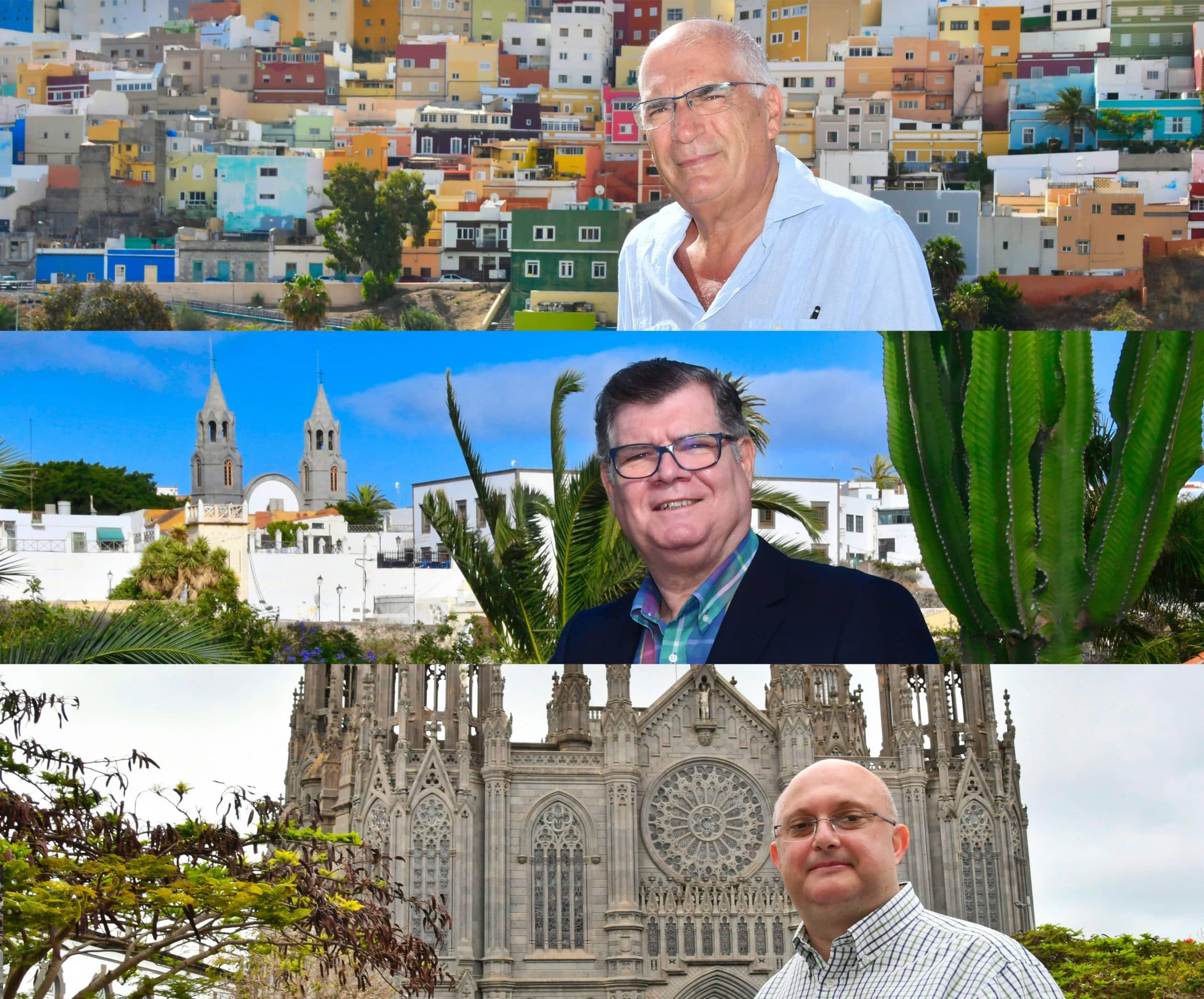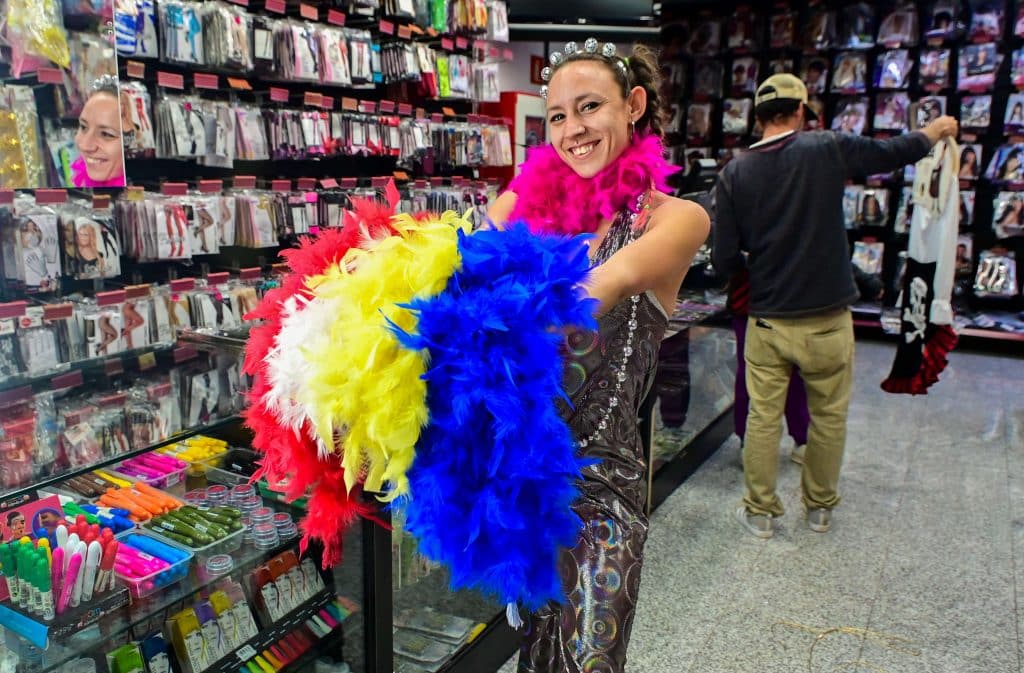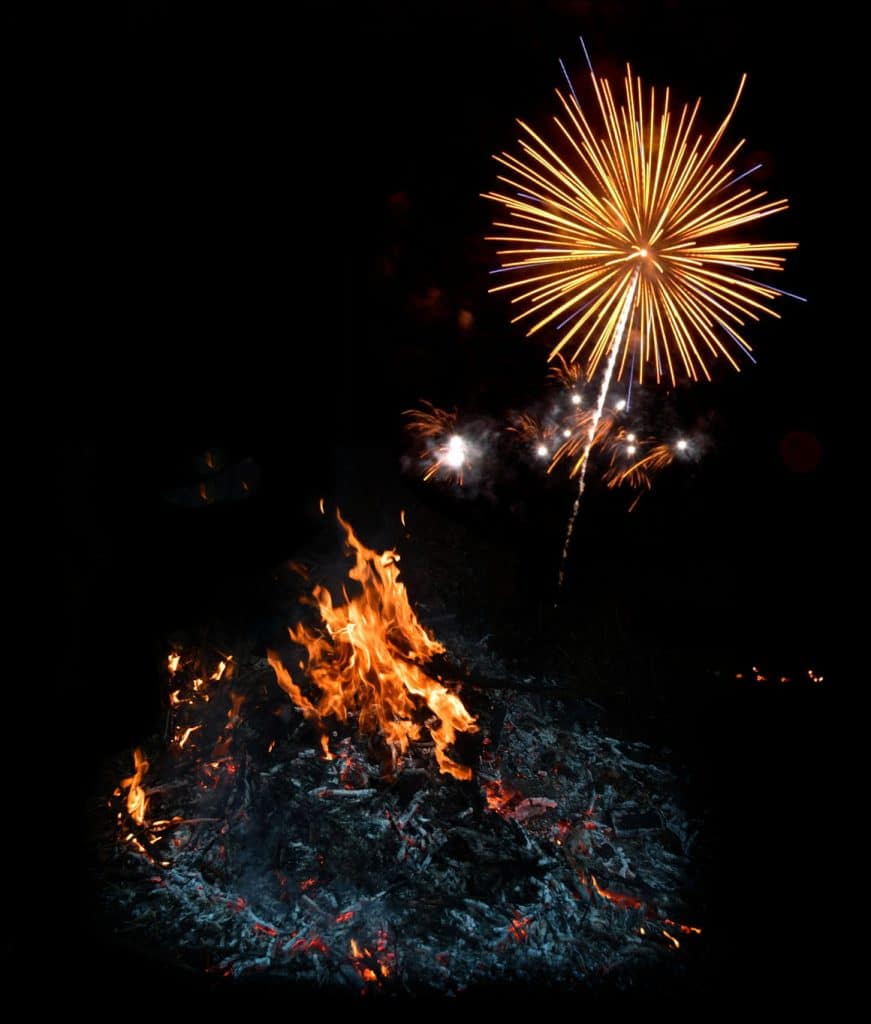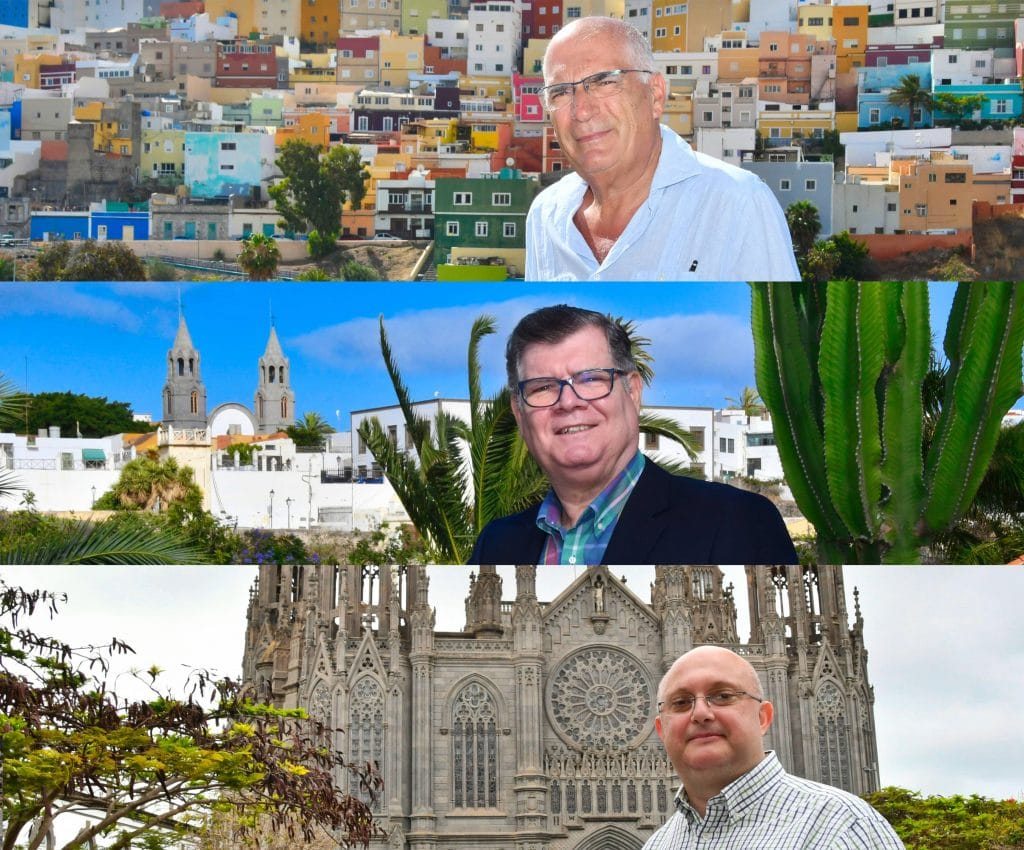Interviews conducted by @loretosocorro
We are going to celebrate San Juan in three cities of Gran Canaria and in many neighborhoods and towns, throughout the island geography. And we will do so by sharing a talk with three people who love history, investigate and disseminate it: Juan José Laforet Hernández (Las Palmas de Gran Canaria, official chronicler), Antonio María González Padrón (Telde, official chronicler) and Armando Pérez Tejera (Arucas , investigator).
We know that early on the morning of June 24, 1478, the army of Queen Isabel I of Castile reached the sands of Santa Catalina Beach - where the Metropol is today.
Was that arrival a mere coincidence or perhaps that day was the one chosen by the "Catholic Queen"?
The truth is that they were very late. A month to get from Cádiz to Gran Canaria, even having skirmishes with Portuguese ships, is a long time.
Was the arrival prepared on June 24, the day of San Juan Bautista, the day of the summer solstice and onomastics of the founders of the current city of Las Palmas de Gran Canaria? And if so, why? Was it perhaps intended to sow a mystery, to turn the arrival of the army into a symbol of evangelization?
This is another of the enigmas of the night of San Juan in Gran Canaria.
The chroniclers tell us that Saint John is the Christianization of the most primitive festival of humanity: the celebration of the summer solstice, the harvest and the fertility. It was at that time when, after the hard work of collecting, a time dedicated to rest and celebration was encouraged. It was used to eliminate all the excess and the old things by means of bonfires.
In Arucas and Telde, San Juan they are patron saint festivals but not in Las Palmas de Gran Canaria, whose patron saint is Santa Ana. We emphasize this because they tell us the importance of unlinking two things that are closely linked in the capital city: the neighborhood festivals San Juan and any manifestation of the magical night and, on the other hand, the city's Foundational Festivities, which coincide on June 24 and which have been celebrated since the 70s of the XNUMXth century.
We have also talked about the purification rituals around fire and water: there are less and less possibilities to make bonfires and jump them. It has been gaining strength and interest to approach the coast, at this time, for a soak. It seems that bathing in the sea has nothing to do with what previous generations did. People used to not go in droves, like now, or hang out with the fridge. It was a bath and going home.
In the old town of Arucas, the irrigation channels in the area, through which the water ran abundantly, were used that night of San Juan as a purifying element.
San Juan, as we see, is one and it is a thousand. With singularities, according to the municipality or the neighborhood where it is celebrated; But what cannot be doubted is that if there is a holiday that combines beliefs, it is neither Christmas nor the Immaculate Conception. It is, without a doubt, Saint John the Baptist. It combines beliefs from the ancient worlds of the Mediterranean arch and by evolution to the present day.
These men have spread sanjuaneras seeds in Sal del Atlántico that, with luck, will sprout that magical night with fire, sea and peeled potatoes - half peeled - without peeling ... We have lit a little fire that is already a bonfire thanks to them and their knowledge, united all three for San Juan.
The future of the patron saint festivities in the capital
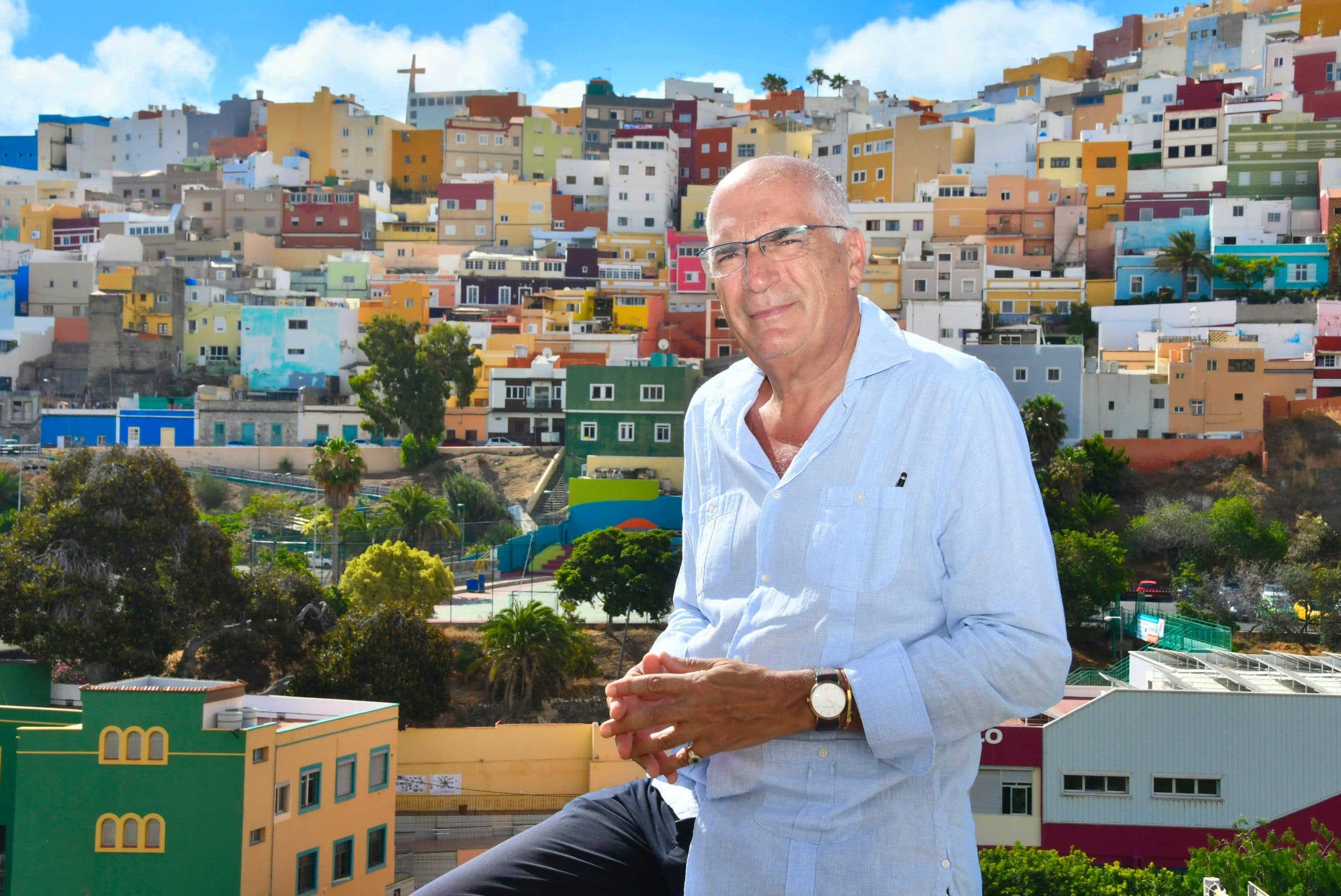
Juan José Laforet Hernández, official chronicler of Las Palmas de Gran Canaria
Juan José Laforet gives us an image that explains very well the different celebrations around San Juan in Gran Canaria. «About the origin of the San Juan festivities I like to say that Arucas and Telde celebrate their saint and Las Palmas de Gran Canaria celebrates their birthday. That is how everyone understands it.
San Juan Bautista - says Laforet - was always celebrated in the capital, but as it has been celebrated in any other place because it is a generic festival in all the islands.
He informs us that, from the 26th to the XNUMXth centuries, the great patron saint festivals of Las Palmas de Gran Canaria were the Santa Ana festivities (July XNUMX): with solemn procession, saraos, luminary, bull game ...
Then there was a transition, from the middle of the 29th century to the beginning of the 70th century, towards another institutional celebration: that of San Pedro Mártir (April XNUMX), which was celebrated as city festivals. That held true throughout the XNUMXth century. Laforet now reviews his memories of those festivities of San Pedro Mártir, in the XNUMXs: «He went to the San Telmo Park, to the bumper cars, to the Ferris wheel, to the cotton candy stalls ... And there were Canarian wrestling competitions , lateen candle ».
Just in those 70s of the XNUMXth century, a citizen movement asked that the festivities on the day of San Juan Bautista be established in Las Palmas de Gran Canaria, as the founding festival of the city. An indisputable argument to defend this request was that we were lucky to know the day and almost the hour when the city was born. On the other hand, San Pedro Mártir had no direct relationship with what was the founding history of the city and it was preferred to make that change.
Juan José Laforet tells us that, in order to change the festivities, he took advantage of the fact that in 1978 the city celebrated 500 years since its foundation. And from that moment they began to celebrate the Foundational Festivities of Las Palmas de Gran Canaria.
The chronicler gives us a trip back in time and we stroll through the old town thanks to his words: «In 1978 the Vegueta neighborhood was closed to traffic and a great party was held. There was a fabulous festival in the Plaza de Santa Ana and a party in all the squares. That day the night walks through the old city also began. It marked a before and after ».
In front of the colorful neighborhood of San Juan, it is obligatory to ask about the bonfires of yesteryear and Juan José Laforet tells us that a great bonfire was made until just three or four years ago, on the hill. “This whole neighborhood - he points to the multicolored houses - was filled with bonfires in the 60s; in the lots that were free from the cliffs of San Roque and of course in the neighborhood of San Juan. Then they were banned, among other things, because the city grew a lot and most of the free lots disappeared. It seems that there was also an experience of making bonfires in the streets of Vegueta, according to some chronicles, bonfires were made in the corners of Vegueta, on the nights of San Juan in the XNUMXth century ».
The proximity of the sea leads us to ask him about the baths on the beach during the night of San Juan and the chronicler comments that people bathed a lot on the beach of San Cristóbal or in the Alcaravaneras and from the twentieth century, since until in the second half of the XNUMXth century there was hardly anyone in the port. «People lived mainly in Vegueta, Triana and bathed in what was called Triana Beach, which today is Francisco Gourié Street. It was a simple act of getting in and out of the water.
And so, walking through recent history, he adds something more about some customs of yesteryear: «Apart from jumping the bonfire there were also other rites such as throwing some talcum powder into the water and observing or looking at whether the water in the pond closer to it was cloudy or not, to know the future ».
Our future is less uncertain if we feel accompanied by people like Juan José Laforet who shows us parts of the history that we are also and that we all share.
Culture cocktail in San Juan de Telde
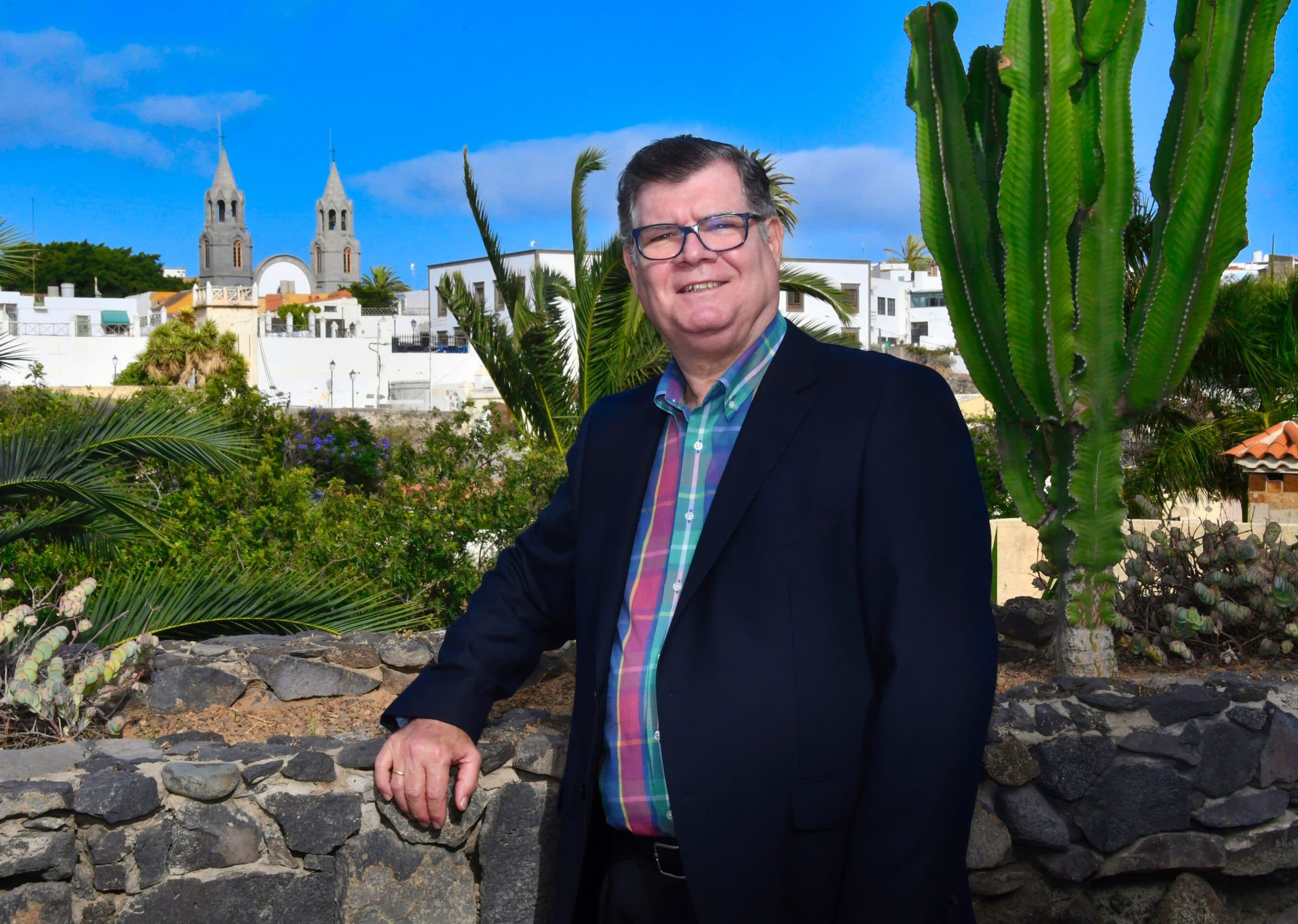
Antonio María González Padrón, official chronicler of Telde
Under the clear sky of the city of Telde, Antonio Mª González Padrón, Telde's official chronicler, receives us to talk about the San Juan Bautista festivities: «San Juan Bautista is chosen as the patron of Telde and together with the religious acts, there is also the reminiscent of how the different cultures that arrived here celebrated it, resulting in a complex and mixed society in which our grandparents and great-grandparents lived ».
González Padrón details us that this mixture was made up of the rites of the aborigines, the beliefs of the colonizers who contributed a Catholic and European Christian culture. He points out that, specifically, people from lower Andalusia came to Gran Canaria with their Sephardic and Arab beliefs. And he adds that when the conquest ends, raids are made to bring slaves, from Western Sahara and from the Gulf of Guinea, to work in the sugar mills.
«All these towns celebrated the harvest festival, in their own way. And so, we arrived at the festivities of San Juan ».
With the neighborhood of San Juan in the background and the pedagogical discourse of Antonio María, we enter the world of bonfires: «When they were lit, in those times, nobody was going to say that it was in honor of their gods, but they said that they were in honor of San Juan ».
«Useless things went to the bonfires and one percent of the population, who knew how to write, wrote down bad wishes and sins on some papers because fire purified. And it is that fire has that dichotomy of destroying and creating. This is how the bonfires of San Juan were promoted since ancient times.
To understand some peculiarities of the San Juan festival in Telde in the XNUMXth century, one must know that, from an economic point of view, the city was of tremendous importance because it had the largest set of cultivated lands in Gran Canaria; in addition to several sugar mills with a large slave population, around the so-called "white gold" industry.
The bells of the minor basilica of San Juan Bautista ring and the chronicler tells us a little known tradition: “On the day of San Juan there was a custom whereby freed slaves could buy the freedom of other slaves, through the savings of their work -which was made for San Juan and for the Virgin of the Rosary-. They chose the day of San Juan to make the economic transaction and free the slave. A "bonfire" was made in front of the statue of the saint, in the Plaza de San Juan. The bonfire was 10 to 12 meters long and when it became a carpet of embers, the slave who had achieved freedom, as a token of gratitude and faith, of courage… danced on the luminous embers. It was a dance of fire, on the embers, extinguishing them with his legs. To make it more beautiful, they took little sea shells, cowbells and bells and tied them roundly, from the knees to the ankles, in such a way that while they jumped a melody could also be heard. This was being done, at least, until the end of the XNUMXth century. '
As we are in the neighborhood of San Francisco, famous for its dancing, dotted with huge crosses and wrapped in tales of witchcraft, we brought up the subject from the chronicler: «There is a lot of lies about witches and spells. This was closely pursued by the parish priests of the islands who did real investigations and took it to the Court of the Inquisition. There were counted cases of witchcraft, rather people were arrested for failing to comply, for being Protestant, for stealing holy water ... but for witchcraft you can count on the fingers of the hand. In a place like Telde, with a great aboriginal tradition, there were what were called curanderas, who made natural medicine with herbs and fruits, such as the so-called "witch of Tara", who lived until about 40 years ago. She said it came from her grandmother, the canary, and that it was inherited from grandmother to granddaughter. What he did was cross his hands, place his hands on his head, place the pommel, the viscera; there were also steleros that fixed the sprains of bones and muscles. In Telde there was only one case of witchcraft in the entire XNUMXth century ».
The chronicler adds that in the 7th years of the last century, fruits began to appear on the beaches of Alcaravaneras, Las Canteras and Melenara. «That was something of the Indians who brought it learned from Cuban Santeria. And it was, from the 80s, that going to the beach to jump a bonfire, to drink some rums and to bathe in the water for fun, began as an anecdotal festival. But this is not a Canarian or aboriginal tradition.
We left the cobbled neighborhood towards San Juan. We stop for a moment in the middle of the square, knowing that this year, in Telde, we will not see bonfires, nor will we be able to jump over them or burn pieces of paper to purify the bad; What we are going to do is imagine those sonorous fire dances thanks to the detailed account of Antonio María González Padrón.
Saint John in Arucas was a reunion
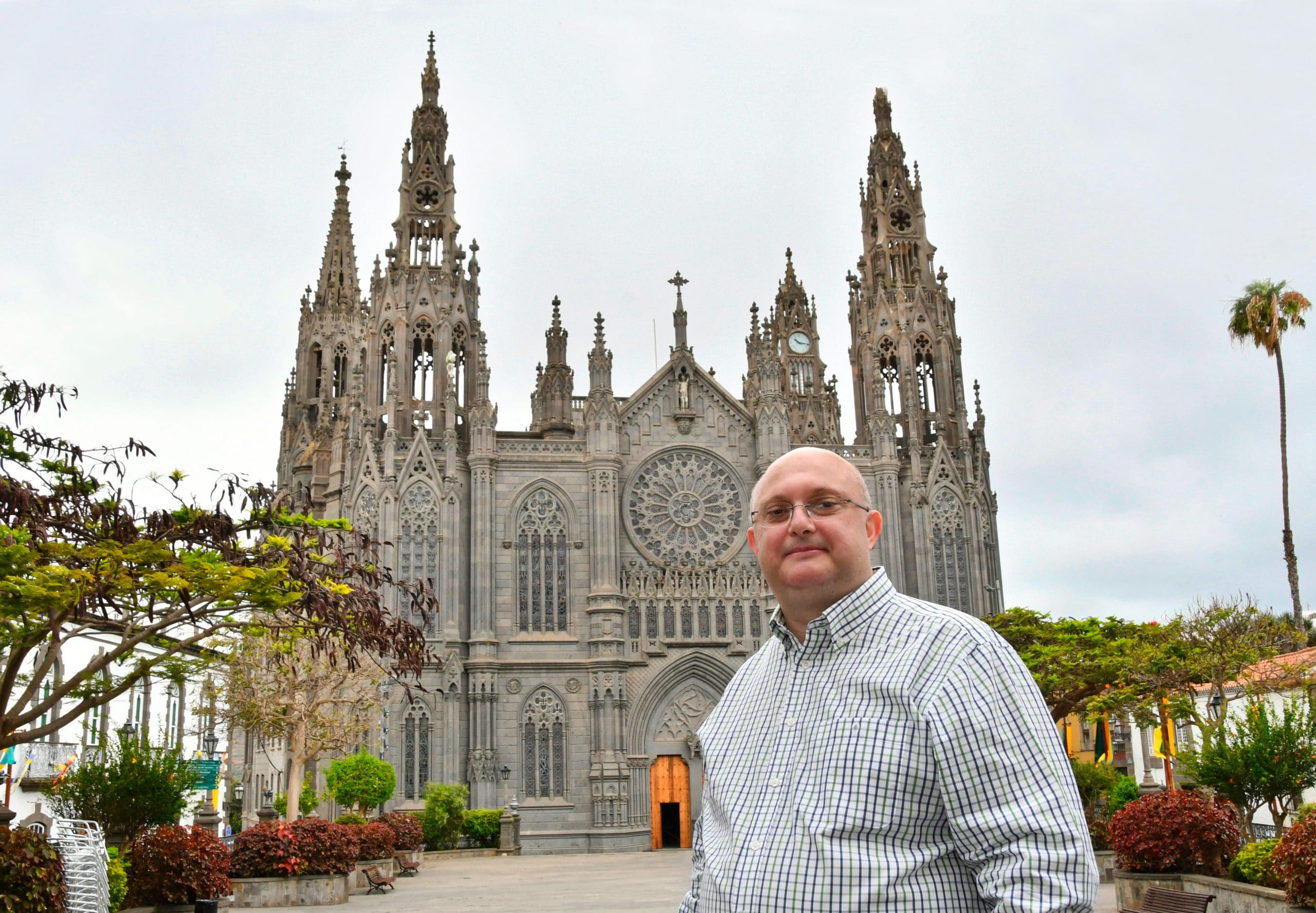
Armando Pérez Tejera, researcher, Arucas
The Plaza de San Juan de Arucas is blue stone and it is history. It dawns decked out with yellow and green flags, announcing that the festivities of the patron saint are just around the corner. If we look closely we discover a detail: miniature dragons guarding the square and almost priceless for visitors. Perhaps, one more mystery around San Juan Bautista and his festivities. If you visit Arucas, stop for a moment to contemplate them. We have counted them with the naked eye and also hidden behind the vegetation that surrounds the square.
We chat with Armando Pérez Tejera, who is a researcher and transmits his passion for history. We discovered that San Juan was chosen as the patron of Arucas since the XNUMXth century and that it unites all the inhabitants of the municipality, as patron, but that it is a festival more rooted in the old town than in the neighborhoods, which enjoy other festivities with more ardor. such as San Pedro in Bañaderos or San Isidro in Montaña Cardones.
From the story of past times we have learned that at this time of year the whole family got together to shelling the pineapples and storing the grain. The neighbors took advantage and got together to make bonfires. «This was something typical in all neighborhoods, even bonfire contests were held. The ones in the La Cruz neighborhood, in the mountains, were famous. And it is that, after finishing the work, around the fire, the whole family gathered to roast pineapples, potatoes and also the notebooks were burned because it coincided with the end of the school year »
Fire is purification and water is also purification, but the coast is far from the center of the city, so Armando tells us something original about this point: «The old town of Arucas has lived with its back to its coast, unlike the coastal neighborhoods that do they participated in the sea. This is why the ditches, through which the purifying water ran, were used that night of San Juan to jump through them, like slides ».
Armando Pérez explains that he has realized that there is a lot of longing for the San Juan festivals of the 50s and 60s. He describes what those festivals were like: «The first neighbors to receive pilgrims were those on Acequia Alta Street and from there the pilgrimage was followed until arriving at the church, for the offering ».
That party the researcher tells us about was street and it was also a walk: «It meant buying and wearing a new suit, getting ready more elegant than ever. It was an excitement and excitement to go and meet loved ones. That feeling that San Juan surrounded was based on knowing that those people who had not seen each other for a long time had a reunion on the occasion of the patron saint festivities. Many citizens of Arucas made internal emigration and returned from Las Palmas de Gran Canaria or from the south, so San Juan became the ideal time for the reunion. And when we arrived there was no shortage of the gofio pella, the rum shot and the sancocho ».
The celebrations of the festivities that the Aruquense researcher recounted were public events such as festivals. «A lot of people came from outside to the festivals, because they were famous. There were beach bars, music and snacks around the square. They were designed for the people and helped to socialize. However, the current trend outside the health situation is to carry out events in closed areas and at low prices, which are far from the popular ».
An event to highlight for its innovativeness, for that time, was the realization of the famous first amateur film festivals, by the hand of the late photographer Manolín and later with Manuel Domínguez Caballero. "Those videos were then shown at parties for the general public."
It has been an endearing walk by the hand of Armando Pérez where we have enjoyed imagining an Arucas totally planted with wheat and millet -before the banana trees-, with parties full of verbena music and the taste of roasted pineapples. We hope that they continue to meet around the Plaza de San Juan, under the protection of the festivities and outside of them.

